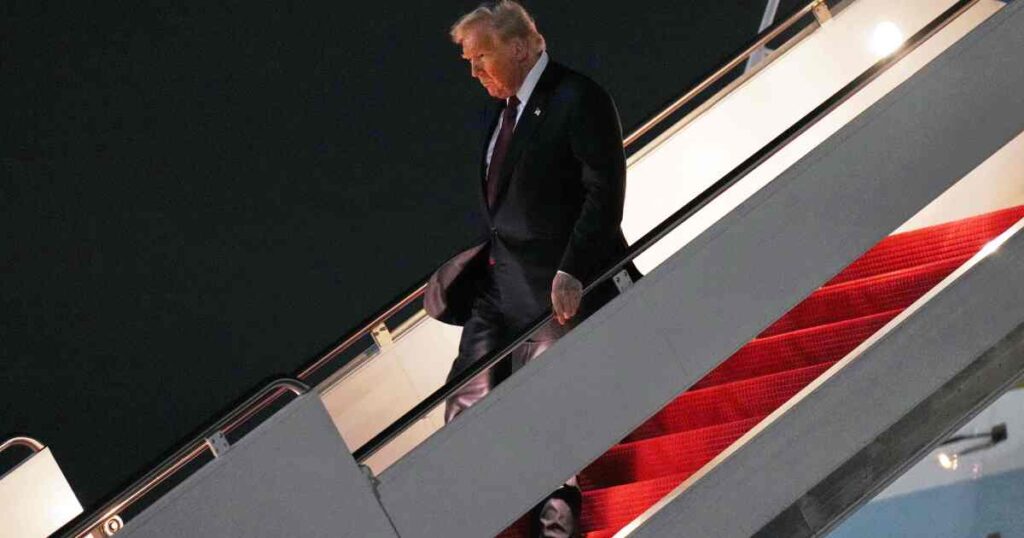WASHINGTON — President Trump will host leaders of five Central Asian countries at the White House on Thursday as he intensifies his hunt for rare earth metals needed for high-tech devices, including smartphones, electric vehicles and fighter jets.
Trump and the officials from Kazakhstan, Kyrgyzstan, Tajikistan, Turkmenistan and Uzbekistan are holding an evening summit and dinner on the heels of Trump managing at least a temporary thaw with Chinese leader Xi Jinping on differences between the United States and China over the export of rare earth elements, a key point of friction in their trade negotiations.
Early last month, Beijing expanded export restrictions over vital rare earth elements and magnets before announcing, after Trump-Xi talks in South Korea last week, that China would delay its new restrictions by one year.
Washington is now looking for new ways to circumvent China on critical minerals. China accounts for nearly 70% of the world’s rare earth mining and controls roughly 90% of global rare earths processing.
Central Asia holds deep reserves of rare earth minerals and produces roughly half the world’s uranium, which is critical to nuclear power production. But the region badly needs investment to further develop the resources.
Central Asia’s critical mineral exports have long tilted toward China and Russia. Kazakhstan, for example, in 2023 sent $3.07 billion in critical minerals to China and $1.8 billion to Russia compared with $544 million to the U.S., according to country-level trade data compiled by the Observatory of Economic Complexity, an online data platform.
A bipartisan group of senators introduced legislation Wednesday to repeal Soviet-era trade restrictions that some lawmakers say are holding back American investment in the Central Asian nations, which became independent with the 1991 collapse of the Soviet Union.
“Today, it’s not too late to deepen our cooperation and ensure that these countries can decide their own destinies, as a volatile Russia and an increasingly aggressive China pursue their own national interests around the globe at the cost to their neighbors,” said Republican Sen. Jim Risch of Idaho, chairman of the Senate Foreign Relations Committee and a sponsor of the legislation. “The United States offers Central Asian nations the real opportunity to work with a willing partner, while lifting up each others’ economies.”
The grouping of countries, referred to as the “C5+1,” has largely focused on regional security, particularly in light of the two-decade U.S. military presence and then withdrawal from neighboring Afghanistan, China’s treatment of ethnic Uyghur Muslims in Xinjiang and attempts by Russia to reassert power in the region.
Secretary of State Marco Rubio welcomed the Central Asian leaders at the State Department on Wednesday to mark the 10-year anniversary of the C5+1 and to plug the potential for expanding the countries economic ties to the U.S.
“We oftentimes spend so much time focused on crisis and problems – and they deserve attention – that sometimes we don’t spend enough time focused on exciting new opportunities,” Rubio said. “And that’s what exists here now: an exciting new opportunity in which the national interests of our respective countries are aligned.”
Deputy Secretary of State Christopher Landau and the U.S. ambassador to India, Sergio Gor, who also serves as President Donald Trump’s special envoy to South and Central Asia, recently visited Kazakhstan and Uzbekistan to prepare for the summit.
Administration officials say deepening the U.S. relationship with the countries is a priority, a point they have made clear to the Central Asian officials.
The president’s “commitment to this region is that you have a direct line to the White House, and that you will get the attention that this area very much deserves,” Gor told the Central Asian officials Wednesday.
In 2023, Democratic President Joe Biden met with the five leaders on the sidelines of the U.N. General Assembly. That was the only other time that a sitting president has taken part in a C5+1 summit.
Madhani writes for the Associated Press. AP writer Matthew Lee contributed to this report.
